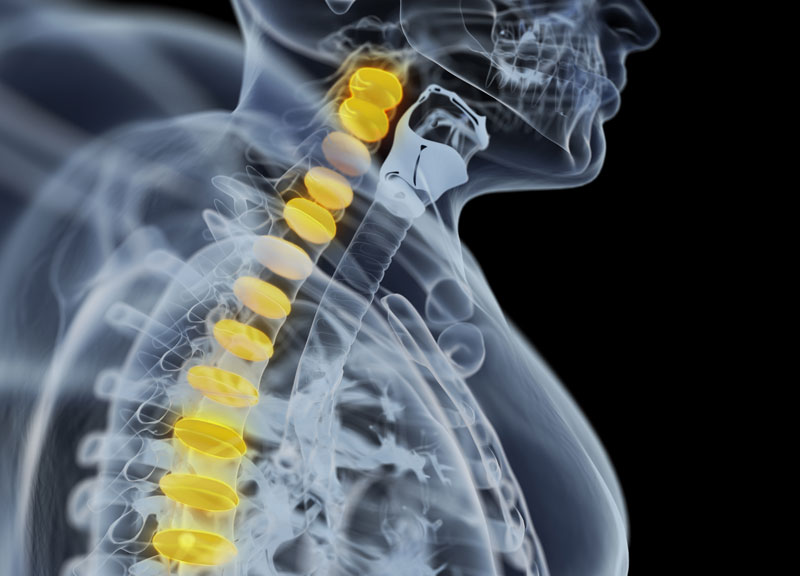An Overview
Spondylolisthesis is a condition caused due to slipping on one of the bones of the spine (vertebrae) out of place onto the vertebra below it. The patient might experience pain if it slips too much causing the bone press on a nerve. Spondylolisthesis usually affects lower back bones.
Types of Spondylolisthesis
Spondylolisthesis can be of many types. Here is a list of the more common types:
Degenerative Spondylolisthesis — This is known to be the most common type of spondylolisthesis. The Natural process of ageing results in loss of water from discs (cushions between the vertebral bones) making them less spongy and less resistant to vertebral movement.
Congenital (by birth) Spondylolisthesis — The condition results from an abnormal formation of bone. This abnormal vertebral arrangement increases the risk of slipping.
Isthmic Spondylolisthesis — The condition occurs due to Spondylolysis, a condition causing small stress fractures (breaks) in the vertebrae. Under some conditions, the fractures may make the bones weak enough to force slipping out of place.
The less common types of spondylolisthesis include:
Traumatic Spondylolisthesis – The condition causes injury that leads to fracture or slippage of spine.
Pathological Spondylolisthesis – The condition results due to weakening of vertebrae by disease such as osteoporosis, tumor or an infection.
Post-surgical Spondylolisthesis – It is slippage that worsens after spinal surgery.
Who is at Risk?
Most of the back pain suffered by teenagers is due to spondylolisthesis. The symptoms can be observed during the teenage growth spurt. Men and women over the age of 40 are more vulnerable to degenerative spondylolisthesis.
Signs and Symptoms
Most patients show no symptoms. In fact, they don’t even know they are suffering from the condition. Low back pain is the most common symptoms. It spreads across the lower back. One might also feel muscle strain.
Spondylolisthesis may result in muscle spasms in the hamstring muscles of the back of the thighs. Patients may find it difficult to walk with tight hamstrings. When slipped vertebra presses a nerve, the pain may travel down the leg to the foot. Patients may feel tingling and/or numbness in foot.
Grading of Spondylolisthesis
Slippage degree is determined by a radiologist after an assessment of spinal X-rays. The slippage is graded from I through IV:
Grade I — 1% to 25% slip – Do not need surgery. These can be treated medically.
Grade II — 26% to 50% slip – Do not need surgery. These can be treated medically.
Grade III — 51% to 75% slip – May require surgery if the patient feels persistent slips and the doctor diagnoses slips.
Grade IV — 76% to 100% slip – May require surgery if the patient feels persistent slips and the doctor diagnoses slips.
Diagnosis
X-ray – Doctors usually prescribe an X-ray of the lower back to reveal a vertebra that has gone out of place.
CT Scan / MRI Scan – A computed tomography (CT) or magnetic resonance imaging (MRI) scans may be conducted to produce detailed images. These will show bones and nerves more clearly.
Treatment for Spondylolisthesis
The treatment depends on varied factors:
- Age
- Overall health
- Extent of the slip
- Severity of symptoms
Usually, conservative treatment will suffice. This includes rest, medication, and exercise. Severe cases may require surgery.
Conservative Treatment — The patient will be prescribed break from sports and other activities until the pain subsides. Doctors will allow for over-the-counter non-steroidal anti-inflammatory drug (NSAID) to reduce pain and inflammation.
Stronger medications are prescribed if the mild ones fail to act. In some cases, epidural steroid injections are given to reduce inflammation and ease pain.
Brace – It acts as a back support and can be used to stabilize the lower back and minimize pain. Exercise and/or physical therapy schedule will help increase pain-free movement. It will also improve flexibility and muscle strength. Doctors will also suggest periodic X-rays to determine continuity of bone slippage.
Physical Therapy – The patients are recommended stabilization exercises to strengthen the abdominal and/or back muscles. It also helps in reducing the bony movement of the spine. It usually takes around 8-12 weeks of aggressive treatment with stabilization exercises on a daily basis to achieve significant clinical improvement.
Surgery
Surgery is considered necessary when the vertebra continues to slip. Also, when the pain is not relieved by conservative treatment and the patient finds it tough to carry on with daily activities, the doctors suggest surgery.
Two types of surgery are usually suggested for spondylolisthesis. These are aimed at relieving pain associated with an irritated nerve. Surgery also helps in stabilizing the spine exactly at the site where the vertebra has slipped out of place. It can also increase the ability of the patient to function.
Decompressive Laminectomy – The surgery involves removal of a part of the bone that presses the nerves. The procedure will reduce pain. However, removal of a part of the bone can leave the spine unstable.
Spinal Fusion – This is performed to provide stability. A piece of bone is transplanted to the back part of the spine. The bone fuses with the spine while healing and create a solid mass of bone. It keeps the spine from moving and stabilizing. In certain cases, instruments such as screws or rods are also used to hold the vertebra firm while the healing process takes place.
Complications of Spondylolisthesis
Patients can experience persistent pain which restricts mobility and makes them inactive. Inactivity leads to weight gain, bone density loss, and loss of muscle flexibility and strength in other parts of the body. Patients are also at higher risk of permanent nerve damage when a slipped vertebra presses spinal nerve root.
What to Expect?
Recurrence of pain will depend on the severity of the spondylolisthesis. Minor slips where the bone is not pressing on any nerves will not result in a recurrence of back pain associated with spondylolisthesis. Conservative treatment processes for mild spondylolisthesis cases is successful in almost 80 percent of cases.
Surgery can provide relief from symptoms in 85-90 percent of people suffering from severe spondylolisthesis.
Prevention from Spondylolisthesis
Spondylolisthesis is not preventable. However, one can take apt steps to minimize the risk of slips:
Focus on strengthening abdominal and back muscles strong to help stabilize and support the lower back.
Participate only in those activities or sports that do not increase injury risk for lower back. The best options include swimming and biking.
Maintaining healthy body weight is very important. Excess weight can put additional stress on the lower back.
Focus on eating a well-balanced diet. This will nourish and strengthen bones.




